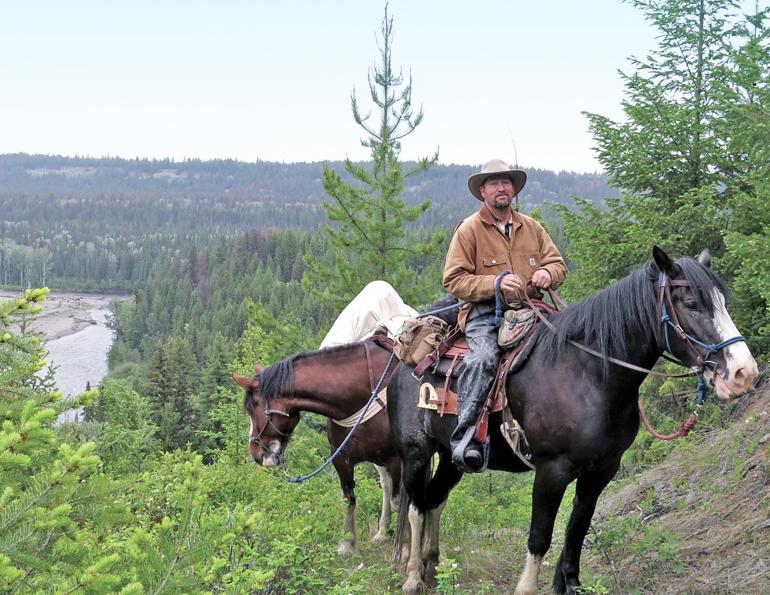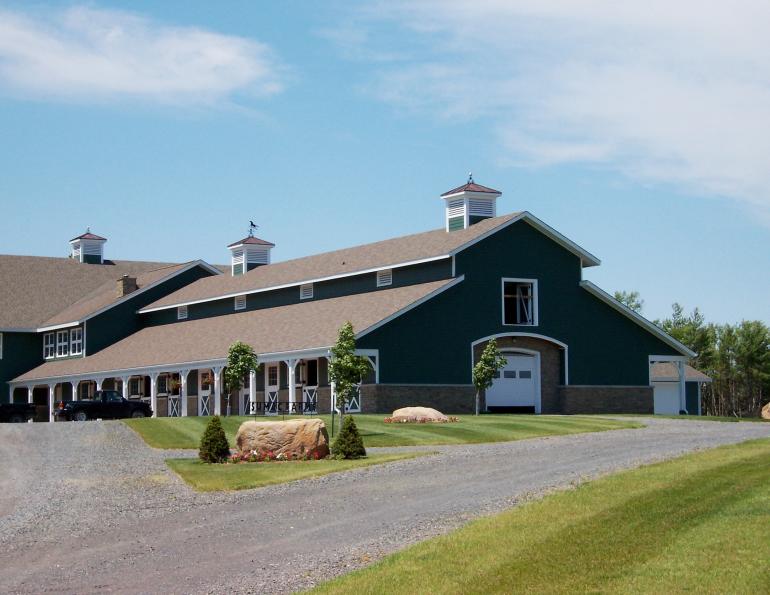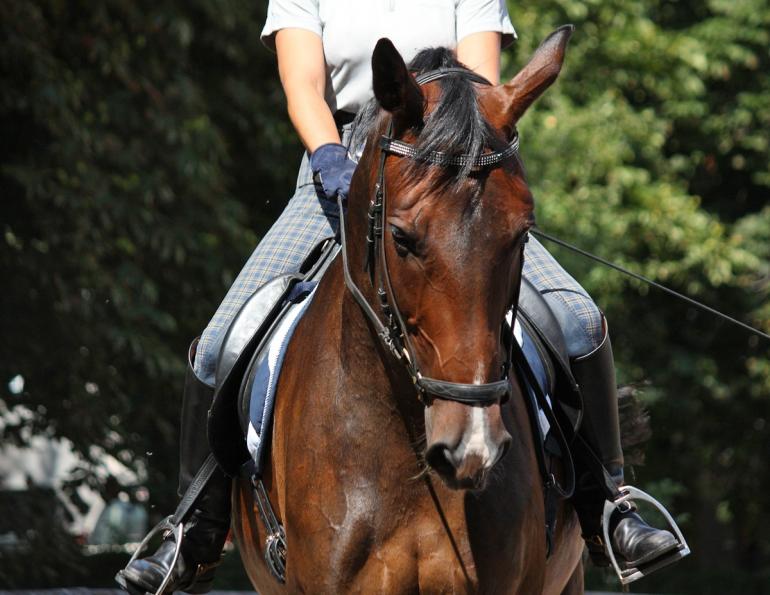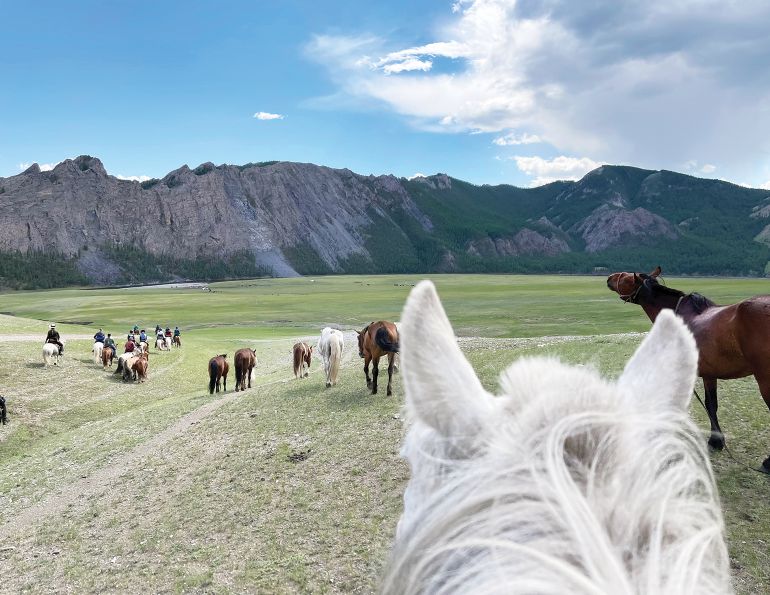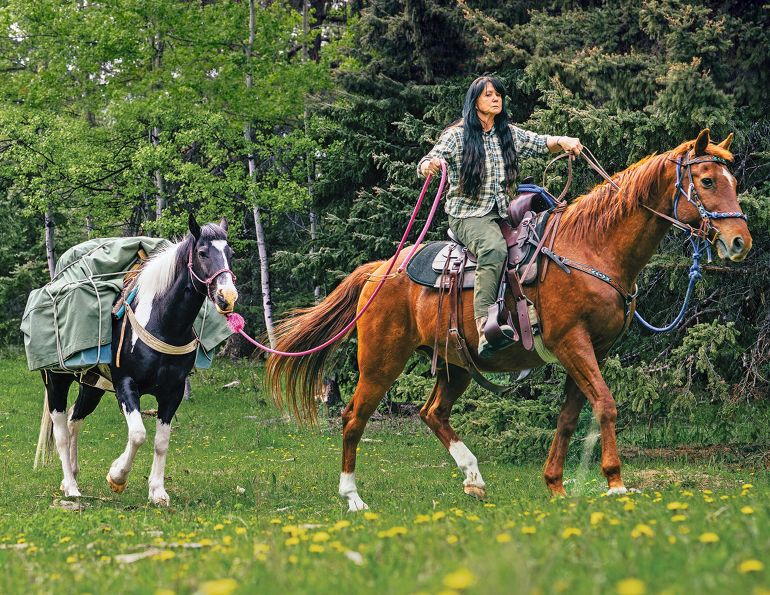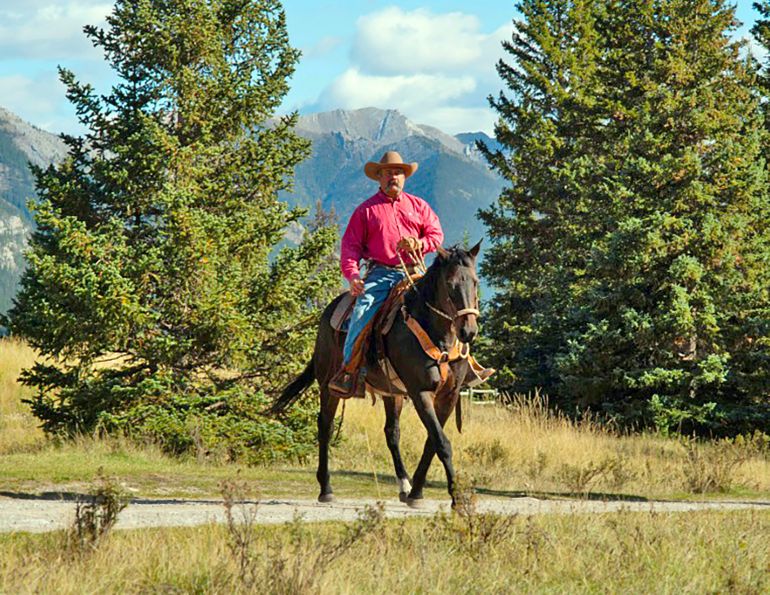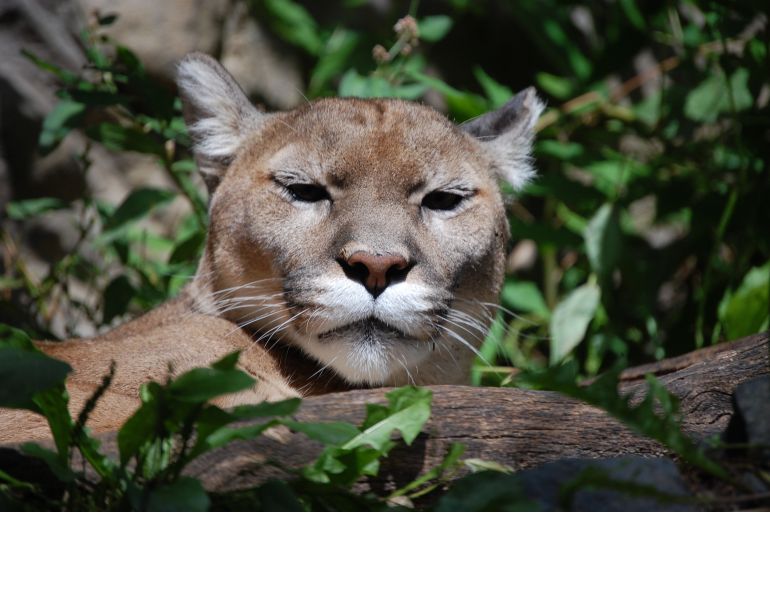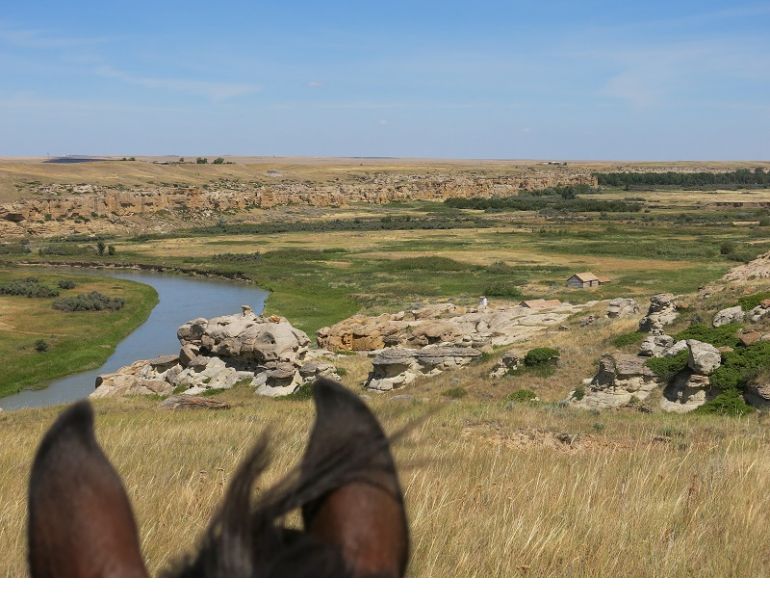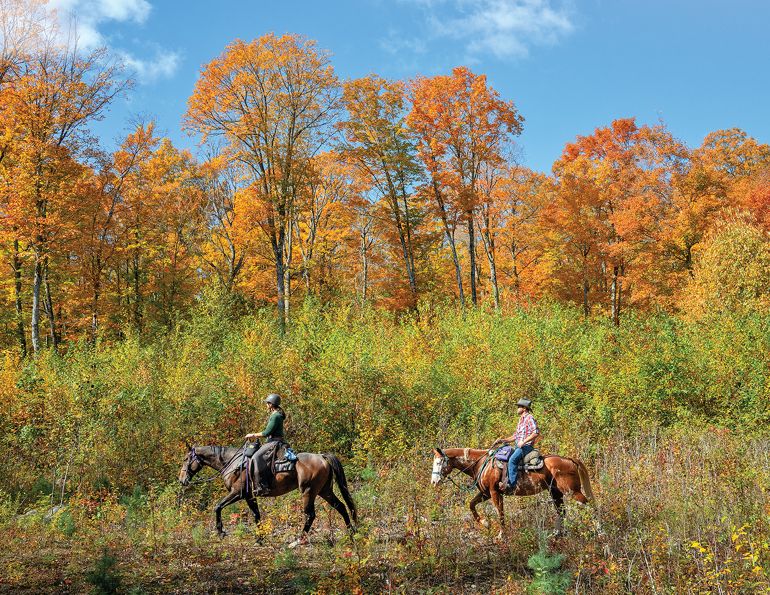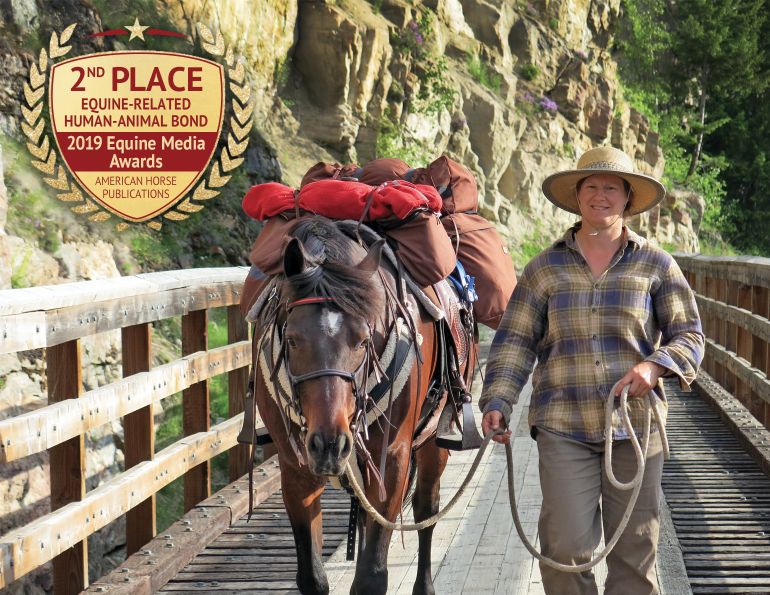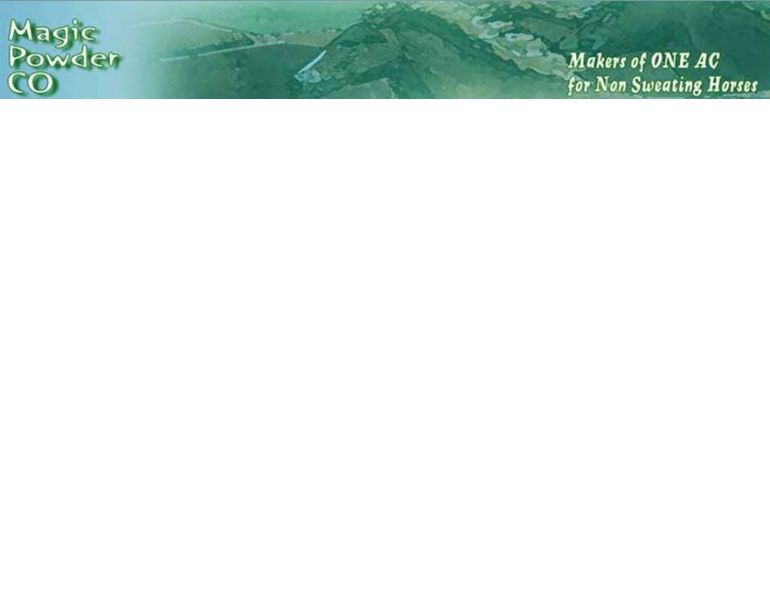By Tania Millen, BSc, MJ
“Let’s take a break here,” Rob LaFrance called from behind me. It was late May, 2019 and three of us were riding a 60-kilometre stretch of the historic Collins Overland Telegraph Trail in central British Columbia, which hadn’t been ridden in its entirety in at least half a century. The trip was an opportunity to ride along a piece of history, experience the challenges of those who had traveled before us, and celebrate the reopening of the trail.
We started our trip at the Blackwater River and were traveling east for three days toward Quesnel. I was riding Jewel, a flashy palomino Paint mare owned by LaFrance, while LaFrance and Richard Christenson each rode one horse and led a pack horse. On our drive to the trailhead, we had dropped hay and potable water at two predetermined camping spots, but we were packing everything else we needed on the horses. Some of the trail had been obliterated by roads and logging operations, but much of it remained, a 1.8-metre wide path winding through forests and gullies - a remnant of life-altering communication technology from 150 years ago, which is mostly forgotten.
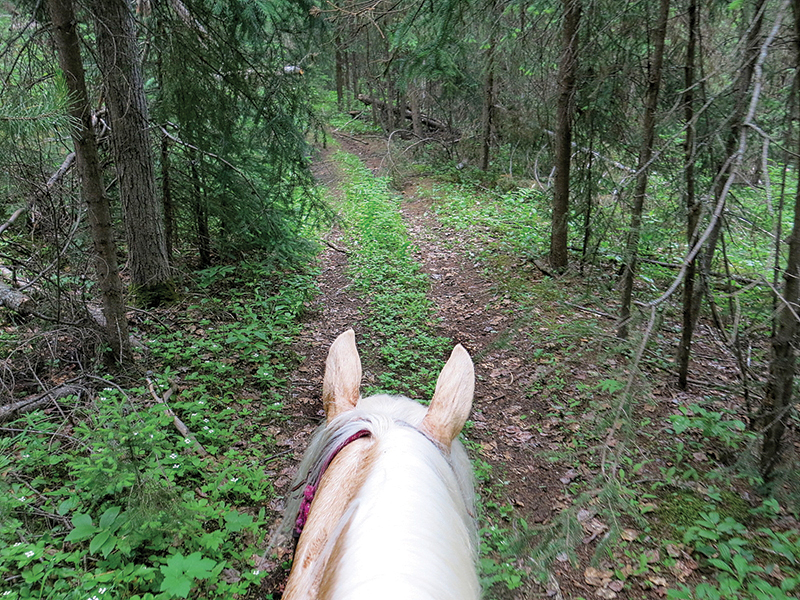
Jewel follows an old wagon supply road on the Collins Overland Telegraph Trail. Photo: Tania Millen
In 1835, long before rotary-dial telephones, Samuel Morse invented the electromagnetic telegraph, which allowed messages to be sent quickly across vast distances. This new technology was a game-changer, at a time when messages generally took weeks or months to be delivered. The concept was simple: A single wire was hung on trees, and its electrical current allowed operators at either end to transmit messages in the dots and dashes of Morse code. It was a globally significant invention and by the mid-1800s, businessmen were racing to connect North America with Europe via telegraph.
Related: Immersed in Muskwa Kechika
Perry Collins was determined to win that race, and in 1865 he began work on the ambitious Collins Overland Telegraph, (COT) from British Columbia (BC), Yukon, and Alaska, across the Bering Sea and Asia to Europe. It was a gigantic undertaking involving multiple construction crews, each with their own herds of beef cattle and pack animals. After two years, the line extended approximately 1,000 kilometres from New Westminster (near present-day Vancouver) through Quesnel and Hazelton to Kispiox in northwest BC. Alas, in 1867, construction of the COT was abandoned when a telegraph line was successfully laid beneath the Atlantic Ocean, making the Collins route redundant. Regardless, the COT line and associated wagon supply road were important communication and transportation routes and continued to be used.
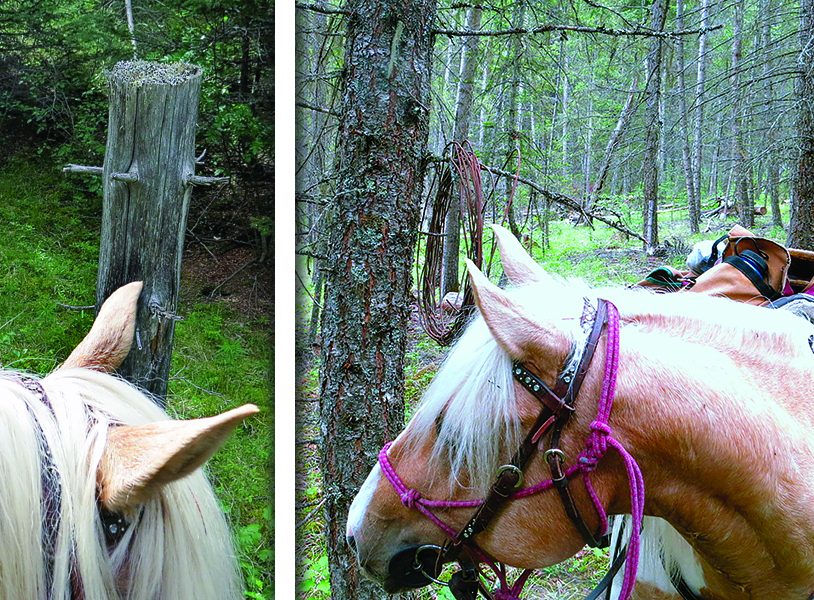
Above: Following the Collins Overland Telegraph Trail — note the old telegraph line pole along the trail, and coil of telegraph wire hanging on the tree. Photo: Tania Millen
In 2014, a 275-kilometre section of the Telegraph Trail was recognized as one of Canada’s Historic Places, and we were riding part of it. Our pack trip started at a trailhead on the east side of the Blackwater River, where the trail immediately angled uphill out of the river valley – the same steep route that historical pack trains traveled for decades. We traversed mature forests and shallow Pantage Creek following the ruts of thousands of hoof and foot prints, and it was easy to imagine pack trains winding northwest across the vast forested interior plateau, fording creeks and avoiding swamps while delivering goods to remote homesteads. As rain pitter-pattered and mosquitos buzzed, we hand-sawed a section of blowdown, then unpacked a chainsaw to finish the job — one of many tools we carried which yesteryear’s trail builders didn’t have.
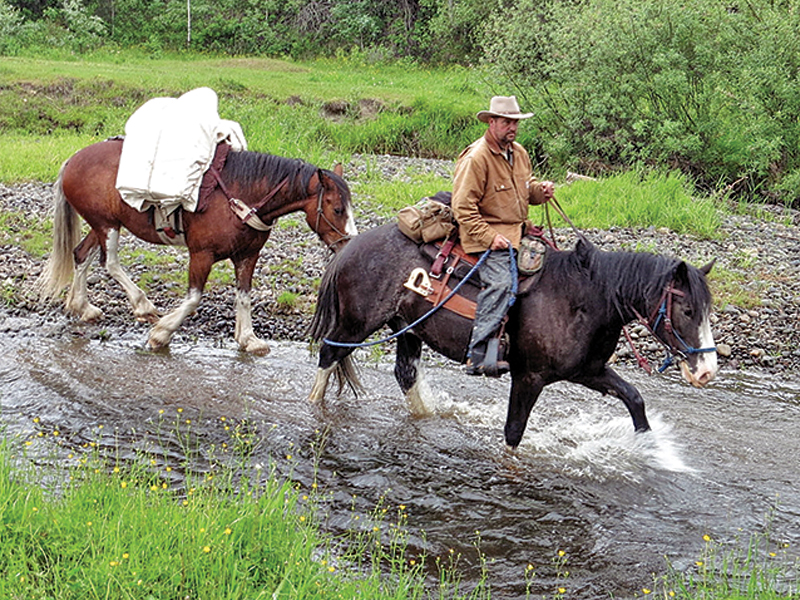
Rob LaFrance and pack horse following Pantage Creek. Photo: Tania Millen
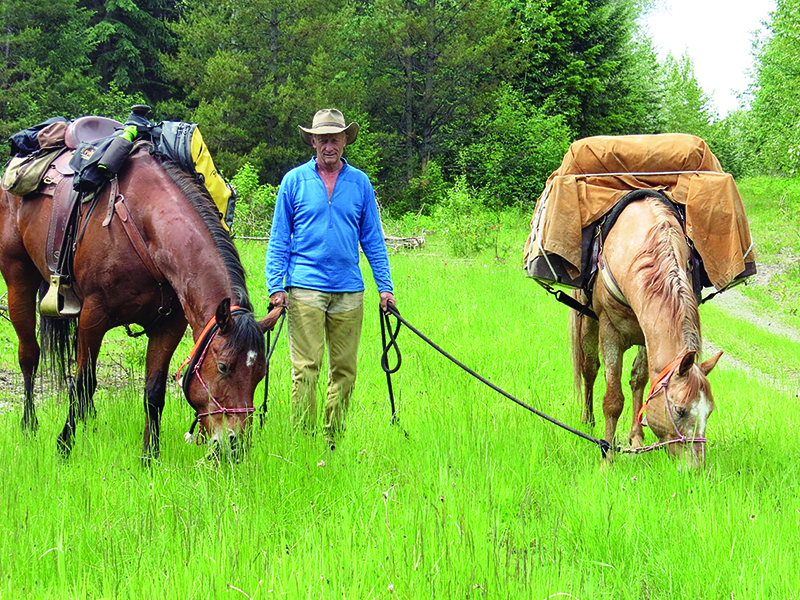
Richard Christenson with horses. It is easy to imagine pack animals grazing here more than 150 years ago. Photo: Tania Millen
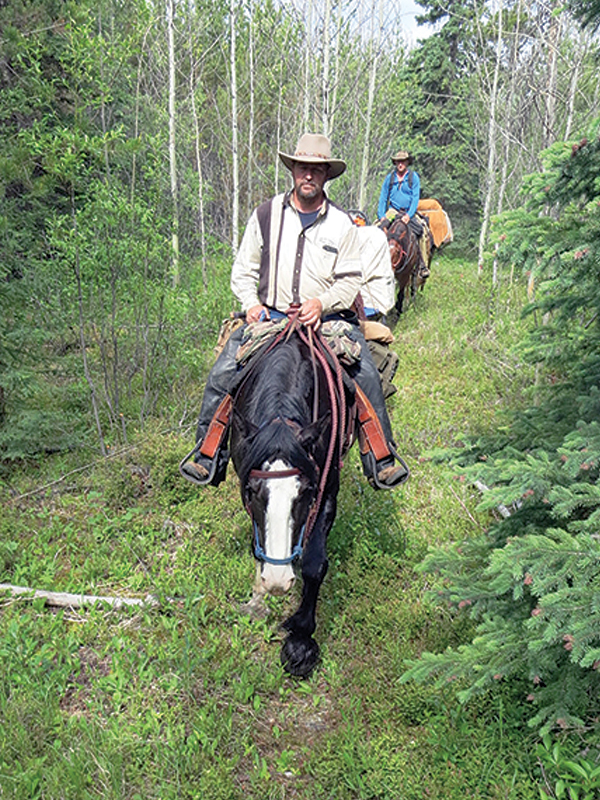
Richard Christenson follows Rob LaFrance, both leading pack horses. Photo: Tania Millen
That one hour of trail clearing reminded us of how difficult it would have been to keep the telegraph line viable year-round. But just living along the telegraph line would have been challenging in itself. Pairs of men, a lineman and an operator, lived together year-round in hand-hewn log cabins approximately 32 miles apart all along the line. They were tasked with maintaining the single strand of wire in all weather, and ensuring that an approximately 1.8-metre wide trail between their cabin and the pairs of men living in cabins to either side of them remained clear of fallen trees. Dry goods were delivered by pack train, while their simple gardens contributed fresh vegetables, and their trap lines provided meat.
Our life on the line was much easier, but by the time we got to our first campsite, we were ready for dinner and rest. As the horses munched on hay that we’d stashed - a feast that historical pack train animals wouldn’t have received - we roasted historically appropriate salmon and root vegetables over the fire. Then, as we settled into our tents, I thought about those who had gone before us.
Related: Horse Packing Adventures in the Back Country

Top/Bottom Left: Paintings of work crews on Collins Overland Telegraph Line by John Clayton White (1835-1907).
Bottom Right: Painting of a cabin on a lake by John Clayton White, with the telegraph line overhead.
Although COT construction was abandoned in 1867, the telegraph line and trail south of Quesnel was maintained by the Western Union Telegraph Company until 1871, when the government leased the line. Meanwhile, the trail north of Quesnel - which we were riding - was used as an overland route for transporting goods by pack train, dog sled, and foot to the Omineca, Cassiar, and Klondike goldfields. Then in 1897, 30 years after the line north of Quesnel was abandoned, the Dominion (Canadian) government started constructing the Yukon Telegraph line north, from Kispiox to Telegraph Creek, Atlin, and Dawson City. By 1901, a telegraph line extended from Vancouver, BC to Dawson City, Yukon providing timely communication between southern commercial centres and the gold rush hinterland.
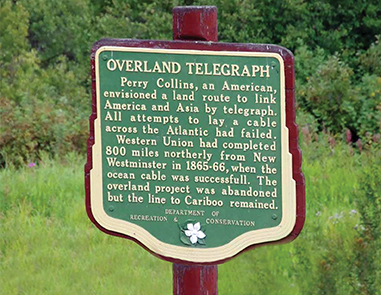
When the section of the telegraph line reached New Westminster, BC, in the spring of 1865, the first message it carried was of the assassination of Abraham Lincoln on April 15.
Following the completion of the Yukon Telegraph, communications technology continued to advance and in 1936, the Hazelton to Telegraph Creek section of the telegraph line was abandoned due to the advent of radio communication plus major floods, which wiped out large portions of the trail. Although sections of the trail throughout BC and Yukon continued to be used by travelers, today much of the trail is overgrown, impassible, destroyed by logging operations, or has disappeared beneath roads. As such, many are unfamiliar with Canada’s historic telegraph trails.
Related: Ya Ha Tinda, The Canadian Government's Only Working Horse Ranch
However, thanks to forward-thinking and action-oriented volunteers, an almost 60-kilometre section of the former COT west of Quesnel was re-opened for travel in 2019. Dwight Dodge, who initially stumbled upon the trail as a teen in 1953 when wandering the woods near his rural Quesnel area home, spent much of his life identifying, clearing, and advocating for the COT. Subsequently, Dodge and others formed the Telegraph Trail Preservation Society in 1990 for the preservation and upkeep of the trail. Unfortunately, Dodge passed away in 2016 and the society has folded, but Back Country Horsemen of British Columbia North Cariboo Chapter members have taken up the torch, raised funds, built trailheads and bridges, and worked to re-open the trail. Our ride was partially a celebration of decades of trail preserving, clearing, and signing, but it was also an opportunity to experience the life of yesteryear’s travelers.

Above/Below: Horses wait patiently for a section of the trail to be cleared. Photos: Tania Millen

On our second day, the sun came out and we traversed many logging cut-blocks, which had obliterated the trail. We used a satellite-based Global Positioning System (GPS) tool, which the original trail construction crews undoubtedly couldn’t have imagined, to identify gravel Forest Service Roads that connected sections of trail. It was hot and water was scarce, so we were relieved to arrive at a breezy lakeside campsite set amongst pine trees. Although our camp was about 500 metres from the trail, it seems likely that many years ago pack animals grazed around the lake while crews worked on the line.
On our third and last day exploring the trail, we traveled through mature and replanted forests, over narrow bridges, and along both the Telegraph Trail and former wagon supply road. When LaFrance called for me to stop, Herkyelthtie (Goose) Lake was a few hundred metres to the south, but other than that there didn’t seem to be anything special about the spot. Then I saw the monument. It was less than one metre tall, constructed of rough chunks of rock, and had a plaque cemented to the top. It commemorates the location of the first telegraph cabin built west of Quesnel in 1865, and is one of only a handful of monuments that celebrates the life-altering telegraph which impacted so many.
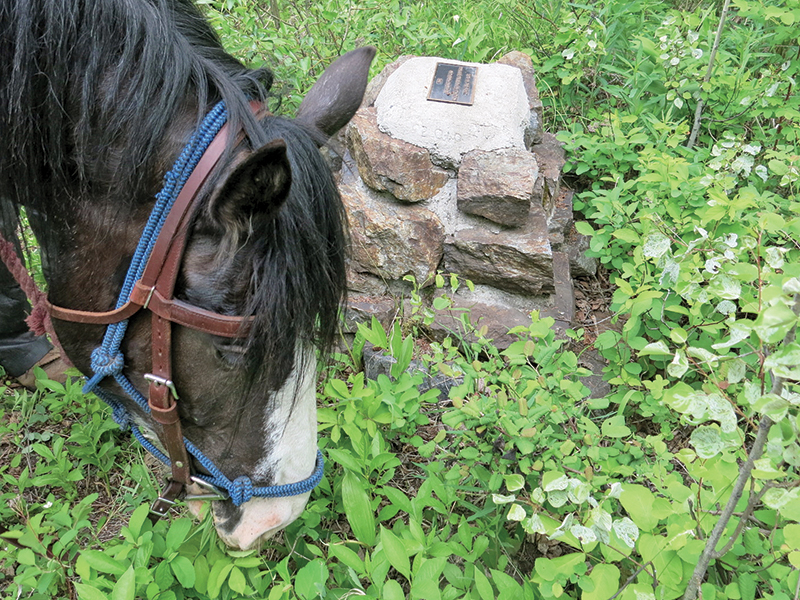
The monument marking the location of the first telegraph cabin built west of Quesnel in 1865. Photo: Tania Millen
From the monument, we rode along Whittier Creek to a recently constructed trailhead which has camping pullouts, corrals, pit toilets, and hitching rails. When we arrived, we sent a satellite message advising LaFrance’s wife that we were ready to be picked up — another reminder of how much communication technology has changed since the days of the telegraph.
Related: Escape to Bar W Guest Ranch
But even in today’s world of instant communication, it’s easy to understand the importance of the Collins Overland Telegraph Trail. The telegraph line provided long-distance communication that took days rather than weeks or months, while the trail itself provided an expedient route for First Nations, prospectors, trappers, packers, outlaws, homesteaders, and their pack trains to travel vast distances, collect and deliver provisions, and settle remote areas.
In contrast to yesteryear’s travelers, our leisurely three-day recreational pack trip along a newly-opened section of the Telegraph Trail involved advanced communication technologies and pre-planned campsites. However, over 150 years after the trail was constructed, horses were still the mode of transportation, and that in itself evoked powerful nostalgia for, and understanding of, an important bit of British Columbia’s history.
Related: The Land of the Long White Cloud Ride
Related: Canada's Yukon on Horseback
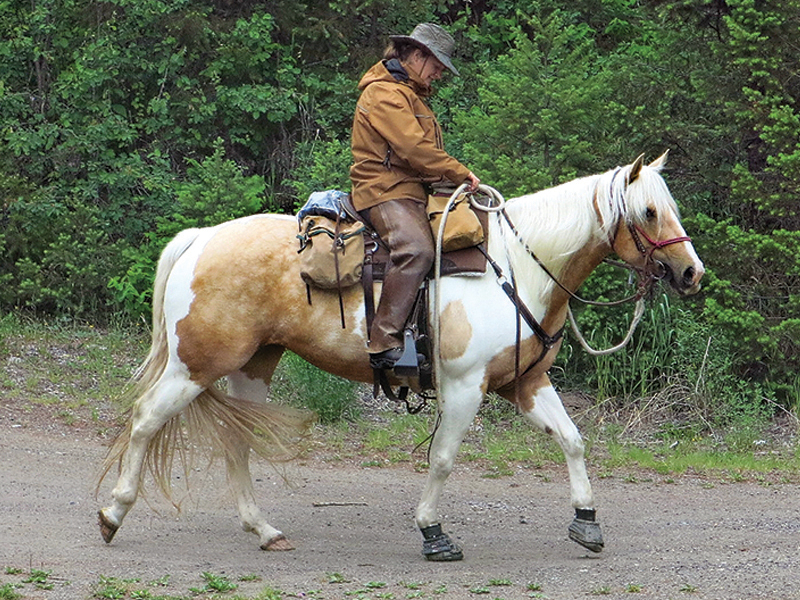
The author riding Jewel at the start of the pack trip. Photo: Michelle LaFrance
Check out more Holidays on Horseback.
Main Photo: Rob LaFrance with the Blackwater River as a backdrop, near the start of the ride. Credit: Tania Millen



